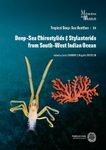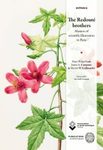By: Gérard Rocamora(Author), Elvina Henriette(Author), Daniel Simberloff(Foreword By), Didier Dogley(Preface By)
384 pages, colour photos, colour illustrations, colour tables
![Invasive Alien Species in Seychelles Invasive Alien Species in Seychelles]()
Click to have a closer look
About this book
Customer reviews
Related titles
About this book
Language: English
Invasive Alien Species in Seychelles addresses conservation practitioners, island managers, scientists, naturalists and any person willing to learn more about invasive species and how to fight them.
Part one provides information about invasive species and how they threaten ecosystems, public health, and the economy. It details the importance of invasive species management to undertake ecological restoration on islands, and in the recovery of threatened species. It showcases the remarkable response Seychelles has made to invasive species and highlights the country's achievements in eradicating and controlling invasive vertebrates on islands. Strategies to prevent new invasions, and management techniques to contain, control or eradicate invasive species, or to mitigate their impacts, are described. Examples of methods to monitor biodiversity and to document ecosystem recovery are presented. Species in Seychelles of particular concern as invasive are listed.
Part two provides detailed species accounts for the main invasive plants and animals in Seychelles (creepers, trees, bushes, aquatic plants, rats and other mammals, birds, reptiles, mosquitoes, snails, ants and other invertebrates). For each species, distribution maps, its ecology and the threats it poses, control and eradication attempts in Seychelles and the region, and detailed management recommendations and lessons learned are provided. Species accounts and a number of case-studies cover a total of 44 invasive species, half of which are among the 100 worst invasive species that affect many islands and countries worldwide. Key publications, websites, guides and toolkits are provided, as well as more than 600 bibliographical references.
Customer Reviews
By: Gérard Rocamora(Author), Elvina Henriette(Author), Daniel Simberloff(Foreword By), Didier Dogley(Preface By)
384 pages, colour photos, colour illustrations, colour tables





















![Écologie Acoustique des Chiroptères d'Europe [Acoustic Ecology of European Bats]](http://mediacdn.nhbs.com/jackets/jackets_resizer_medium/22/224996.jpg?height=150&width=103)
![Naïades et Autres Bivalves d'Eau Douce de France [Naiades and Other Freshwater Bivalves of France]](http://mediacdn.nhbs.com/jackets/jackets_resizer_medium/23/239318.jpg?height=150&width=103)
![Coraux Constructeurs de Récifs des Caraïbes [Coral Reef Builders of the Caribbean]](http://mediacdn.nhbs.com/jackets/jackets_resizer_medium/24/247989.jpg?height=150&width=103)
![Coraux Constructeurs de Récifs des Caraïbes [Coral Reef Builders of the Caribbean]](http://mediacdn.nhbs.com/jackets/jackets_resizer_medium/24/249211.jpg?height=150&width=99)


![Atlas des Amphibiens et des Reptiles Terrestres de l'Archipel des Comores [Atlas of Amphibians and Terrestrial Reptiles of the Comoros Archipelago]](http://mediacdn.nhbs.com/jackets/jackets_resizer_medium/24/247858.jpg?height=150&width=103)
![Atlas des Amphibiens et Reptiles de Martinique [Atlas of Amphibians and Reptiles of Martinique]](http://mediacdn.nhbs.com/jackets/jackets_resizer_medium/24/243565.jpg?height=150&width=104)
![La Flore Illustrée de Mayotte [The Illustrated Flora of Mayotte]](http://mediacdn.nhbs.com/jackets/jackets_resizer_medium/24/249350.jpg?height=150&width=106)














![Antoine-Laurent de Jussieu (1748-1836): Fabrique d'une Science Botanique [Production of Botanical Science]](http://mediacdn.nhbs.com/jackets/jackets_resizer_medium/25/259747.jpg?height=150&width=103)
![Les Chauves-Souris de Guyane [The Bats of French Guiana]](http://mediacdn.nhbs.com/jackets/jackets_resizer_medium/13/134247.jpg?height=150&width=100)




![Enraciner l’Empire: Une Autre Histoire du Jardin Botanique de Calcutta (1860-1910) [Grounding the Empire: Another Story of the Calcutta Botanical Garden (1860-1910)]](http://mediacdn.nhbs.com/jackets/jackets_resizer_medium/25/255857.jpg?height=150&width=103)

![Atlas des Mammifères Sauvages de France, Volume 3: Carnivores et Primates [Atlas of Wild Mammals of France, Volume 3: Carnivores and Primates]](http://mediacdn.nhbs.com/jackets/jackets_resizer_medium/26/263780.jpg?height=150&width=106)
![Flora of Cambodia, Laos and Vietnam, Volume 36 [Faune et Flore Tropicales, Volume 47]](http://mediacdn.nhbs.com/jackets/jackets_resizer_medium/24/245033.jpg?height=150&width=101)
